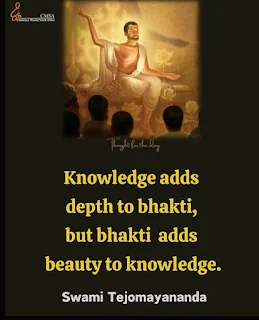Pramaana paddhati
Svaroopa paddhati
Adhikaara paddhati
Guroopaasana paddhati
Bhagavatparicharyaa paddhati
Bhagavatparijanopaasanaa paddhati
Sadupaasanaa paddhati
Vihita vyavasthaana paddhati.
Varjaneeya paddhati
Phalodaya paddhati.
These paddhatis outline the path of a prapanna—one who has surrendered to the Lord, especially in the context of śaraṇāgati and bhāgavata dharma.
1. Pramāṇa Paddhati – The Way of Right Knowledge
This section discusses the valid means of knowledge (pramāṇas) accepted in Śrīvaiṣṇava Vedānta—primarily śabda (scriptural testimony) as the ultimate source. It establishes the Vedas, Upaniṣads, Brahmasūtras, and Divya Prabandham as authoritative in matters of dharma and liberation, while also acknowledging perception and inference in worldly matters. It sets the epistemic foundation for understanding the self, the Lord, and the path.
2. Svarūpa Paddhati – The Way of Understanding the True Nature
Here, the true nature (svarūpa) of the jīva (individual soul) is defined as:
Sesa (servant) of the Lord
Completely dependent (paratantra)
Possessing knowledge and bliss, but subservient to the Lord This section helps the seeker understand their identity in relation to Bhagavān—not as independent enjoyers, but as eternal servants (śeṣa-bhūta) of Nārāyaṇa.
3. Adhikāra Paddhati – The Way of Spiritual Eligibility
This paddhati clarifies who is qualified for prapatti (total surrender) and devotional service. It examines spiritual eligibility based on:
Detachment
Faith
Humility
Lack of pride in one's own effort
Even one who is not highly learned or ritualistically perfect, but is sincere and dependent on God, is eligible for grace.
4. Gurūpāsana Paddhati – The Way of Serving the Guru
Describes the reverence and worship of the ācārya (guru), who is the visible manifestation of God’s grace. It prescribes ways to:
Serve the guru
Learn with humility
Accept instructions as sacred The guru is seen as the bridge between the jīva and Bhagavān, worthy of utmost devotion.
5. Bhagavat-Paricaryā Paddhati – The Way of Worshipping the Lord
Explains daily and lifelong service to Bhagavān, whether in temples or in one's heart. This includes:
Archana (ritual worship)
Recitation of His names
Temple service (kainkaryam)
All actions are done with love and surrender, not for personal gain.
6. Bhagavat-Parijanopāsanā Paddhati – The Way of Worshipping the Lord’s Devotees
Here, service to devotees of the Lord (Bhāgavatas) is presented as higher than direct service to the Lord Himself. Serving the Lord’s devotees pleases Him more, and they are treated with utmost reverence as extensions of His grace.
7. Sadupāsanā Paddhati – The Way of Proper Meditation and Worship
Details the right methods of devotion and meditation—such as:
Contemplation on the Lord’s form, qualities, and leelās
Singing hymns with awareness It warns against mechanical ritualism and encourages emotional involvement and awareness of God’s greatness and compassion.
8. Vihita Vyavasthāna Paddhati – The Way of Proper Conduct and Discipline
Lays down the disciplines a prapanna must follow, including:
Truthfulness
Cleanliness
Non-injury
Simplicity
These are seen not as rules to earn merit, but as natural expressions of surrender and love.
9. Varjanīya Paddhati – The Way of Renunciation
Prescribes what must be avoided by a devotee:
Pride
Criticism of devotees
Egoistic independence
Dependence on personal effort over grace
Avoiding these ensures the purity and humility essential for divine grace.
10. Phalodaya Paddhati – The Way of Understanding the Fruit (Result)
Explains the ultimate result of surrender—which is:
Eternal service in Vaikuṇṭha
Relief from samsāra
Blissful union with the Lord
This section fills the devotee with hope and longing for liberation through God’s grace, not personal effort.
Each of these paddhatis outlines a step in the spiritual journey of a prapanna—from knowledge, self-understanding, surrender, service, to ultimate union with the Lord, all centered around the concept of total dependence (śaraṇāgati) and divine grace (kr̥pā).








